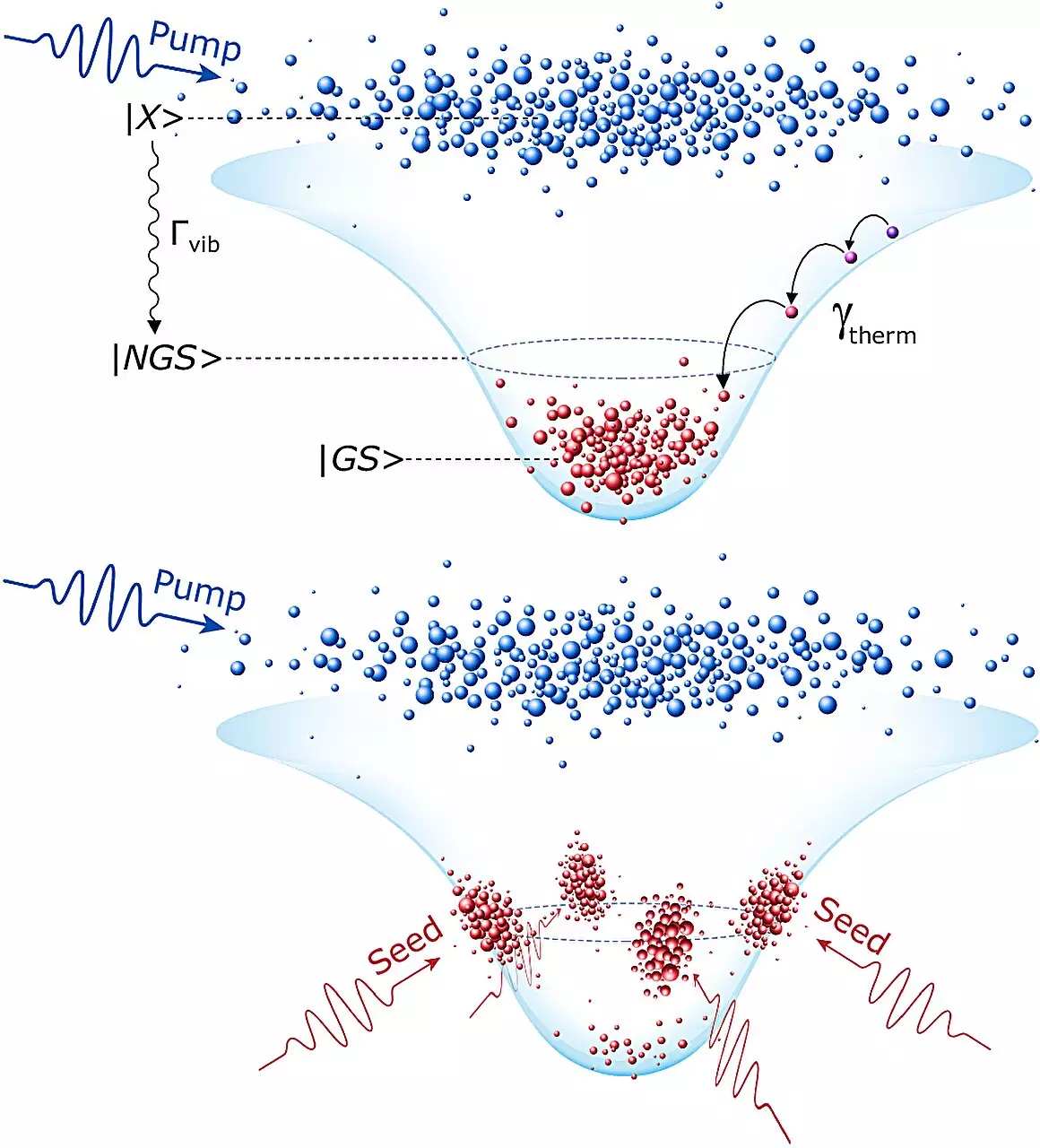In the ever-evolving world of technology, a remarkable breakthrough has emerged from a collaboration between researchers at Skoltech and Bergische Universität Wuppertal. This innovation revolves around the development of a revolutionary universal NOR logical element utilizing polariton condensates. Operating at room temperature, this new logic gate not only boasts the ability to function at unprecedented speeds, but it also does so while completely circumventing the limitations posed by conventional electronic systems. The implications of this advancement are profound, suggesting a future where optical computers could outpace their electronic counterparts by orders of magnitude.
The Limitations of Traditional Electronics
For decades, electronic computing systems have relied on the principle of binary logic gates. These gates—essentially the building blocks of modern processors—execute basic logical operations like AND, OR, and NOT. However, they come with inherent speed limitations dictated by the physical properties of materials used in semiconductor technology. The clock speeds of contemporary processors hover around several gigahertz. Beyond this threshold, the processors encounter unsustainable thermal output, effectively transforming high-speed operations into inefficient heating devices. This conundrum has hindered the exponential growth in computing speeds that consumers and researchers have long sought.
The Power of Polariton Condensates
The Skoltech research team’s innovation, however, shifts the paradigm by employing polariton condensates in their optical NOR gate design. Polariton condensates, often referred to as “liquid light,” possess the fantastic capability to amplify weak optical signals significantly. By taking advantage of these peculiar properties, the researchers developed a logic gate that can handle multiple inputs—specifically, an impressive 12—making it a potential game-changer in computational architecture.
This significance is not merely academic; it introduces a powerful avenue for advancing optical computing. The current electronic systems have become constrained by the laws that govern their design. Optical systems, on the other hand, do not experience the same limitations, potentially reaching operation rates up to 1 terahertz—a striking 300 times faster than traditional electronics.
Room Temperature Operations and Practicality
One of the standout features of this new optical NOR gate is its ability to operate at room temperature. In contrast to many optical devices that require elaborate cooling systems, this breakthrough permits broad accessibility and integration into conventional computing environments. The implications of this are critical; researchers have historically struggled with creating efficient optical communication channels due to complex operational requirements. By overcoming this obstacle, the latest findings position these optical gates as feasible components in future computing systems, without the burden of extensive temperature control solutions.
One Photon: A Catalyst for Control
An exciting aspect of this research reveals that only a single photon is required to control the optical polariton transistor that acts as a basis for the NOR gate. This feat is extraordinary, as it underscores the fundamental differences between photons and electrons. While electrons often interact and impede each other, photons maintain their independence, allowing for an array of new possibilities in logic gate design. The implications are manifold, enabling the potential for transformations in how we conceptualize and implement logic in computing systems.
Cascading and Reproducing Logic Elements
The researchers note not just the capability of creating individual logic gates but also the potential to cascade and reproduce them in circuits. This signifies an evolutionary leap forward in building expansive optical computing networks. With such architecture, the interplay of thousands or millions of these optical NOR gates could revolutionize computational power and significantly enhance the efficiency of complex calculations.
The prospect of cascading optical logic gates opens further possibilities for innovation in high-performance computing, artificial intelligence, and data processing. The overarching vision of creating optical computers that can significantly outperform their electronic predecessors becomes increasingly tangible with this advancement.
With the introduction of this groundbreaking optical NOR gate, researchers are not just revealing a new technology but extending the horizons of what is possible in computational science. By transcending the boundaries imposed by electronic systems and utilizing the unique properties of polariton condensates, they pave the way for a future where optical computing may redefine our technological landscape. This development not only sparks excitement but raises critical questions about the sustainability and scalability of future technologies. As we stand on the brink of this revolutionary shift, the promise of a faster, more efficient, and innovative computational era awaits.


Leave a Reply